How to choose the best cold calling software for your sellers

Director of Sales Development

Tags
Share
For all the talk about cold calling being “dead,” there’s no shortage of evidence suggesting that cold calling is alive and well. Firstly, not every business can rely just on inbound calls from potential customers.
And yes, there’s also LinkedIn and other channels, but research shows that over 80% of buyers still accept meetings with sellers who reached out to them, and 57% of VP buyers actually prefer to be contacted by phone.
So how do you get the most out of cold calling and make it an effective prospecting or lead generation tactic for your business?
One of the most important things to do is invest in quality cold calling software—and no, I’m not just saying it because I’m biased and work at Dialpad. I oversee a team of SDRs who make cold calls all day, and it’s hard to imagine them being as successful as they are without the help of software. In this post, I’m going to show you a few ways we use cold calling software and how to choose a tool that fits your business and empowers your sales team.
What is cold calling?
Cold calling has been around a long time, as you probably know. “Cold calling” is simply when a salesperson contacts people over the phone about a product they’re likely unaware of or haven’t expressed interest in. There’s usually no established connection between the salesperson and the people they’re cold calling.
(Before the Internet, salespeople would go door-to-door selling products. Now, salespeople can still sell door-to-door technically, but it’s way easier—and much cheaper for companies—for salespeople to just cold call or cold email.)
So, where does that leave telephone cold calling today? Well, 41% of salespeople still say that the phone is their most valuable sales tool. But the days of having your outbound sales team flipping through a Rolodex or just reading off a call script are over.
Today, sales teams need tools that streamline the sales process in real time, deliver results, and allow reps to work from anywhere. I’ll show you what we look for as a sales org when we look for software in just a bit. (You can get more cold calling tips here.)
Before looking at software—a quick note on the legalities of cold calling
In the US, the Federal Trade Commission (FTC) takes unwanted telemarketing and telesales calls very seriously. Fines can be enormous—so you definitely want to follow FTC rules!
Of course, the United States isn’t the only country with rules on who you can and can not call. The United Kingdom, Canada, the European Union, Australia, New Zealand, India, and Singapore all have their own telemarketing rules, though the ramifications for violating the rules vary by country.
So how do you conduct cold calls without violating any rules? There are two important legislative measures in the United States that you’ll likely run into. Just make sure you’re aware of the federal, state, or national rules of the region you're cold calling in to make sure you don’t break any laws.
TCPA
TCPA stands for the Telephone Consumer Protection Act. Passed by Congress in 1991, it limits the use of telemarketing and automated telephone devices—basically its goal is to drastically reduce the amount of intrusive or excessive calling that consumers are subjected to companies.
Among other statutes, it states that businesses:
Cannot call residences before 8am or after 9pm, local time.
Must comply with the National Do Not Call Registry.
Cannot send unsolicited advertising faxes.
Cannot be made to a number using a recording or artificial voice.
Must maintain an up-to-date, company-specific Do Not Call list.
Additionally, the salesperson has to state their name, the business they’re calling on behalf of, as well as a phone number and address for the company.
TCPA rules don’t make cold calling impossible, but it’s important to understand and follow the regulations. Train your team regularly on TCPA best practices and stay up to date with any changes in the law.
Do-not-call registry
The other big cold calling regulation to be aware of is the National Do-Not-Call Registry, which is a list maintained by the U.S. federal government that lists the names and phone numbers of people who have requested that telemarketers not contact them.
To comply with the Do-Not-Call Implementation Act of 2003, the FTC started the National Do Not Call Registry. The FTC states that telemarketers who sell a product or service must register with the FTC before accessing the registry.
And yes, it’s illegal to use the registry for any other purpose than making sure you don’t call the numbers on the registry.
Here are some exemptions from the Do Not Call Registry:
Rules only apply to personal phone numbers, not business lines.
Political organizations can call personal phone numbers on the list.
Non-profit organizations
Survey calls
Bill collectors (there are separate laws regulating debt collection calls)
Keep in mind that there are Do Not Call lists for states and companies, in addition to the national list.
For instance, here’s what the sign-up page for the Pennsylvania state Do Not Call list looks like:
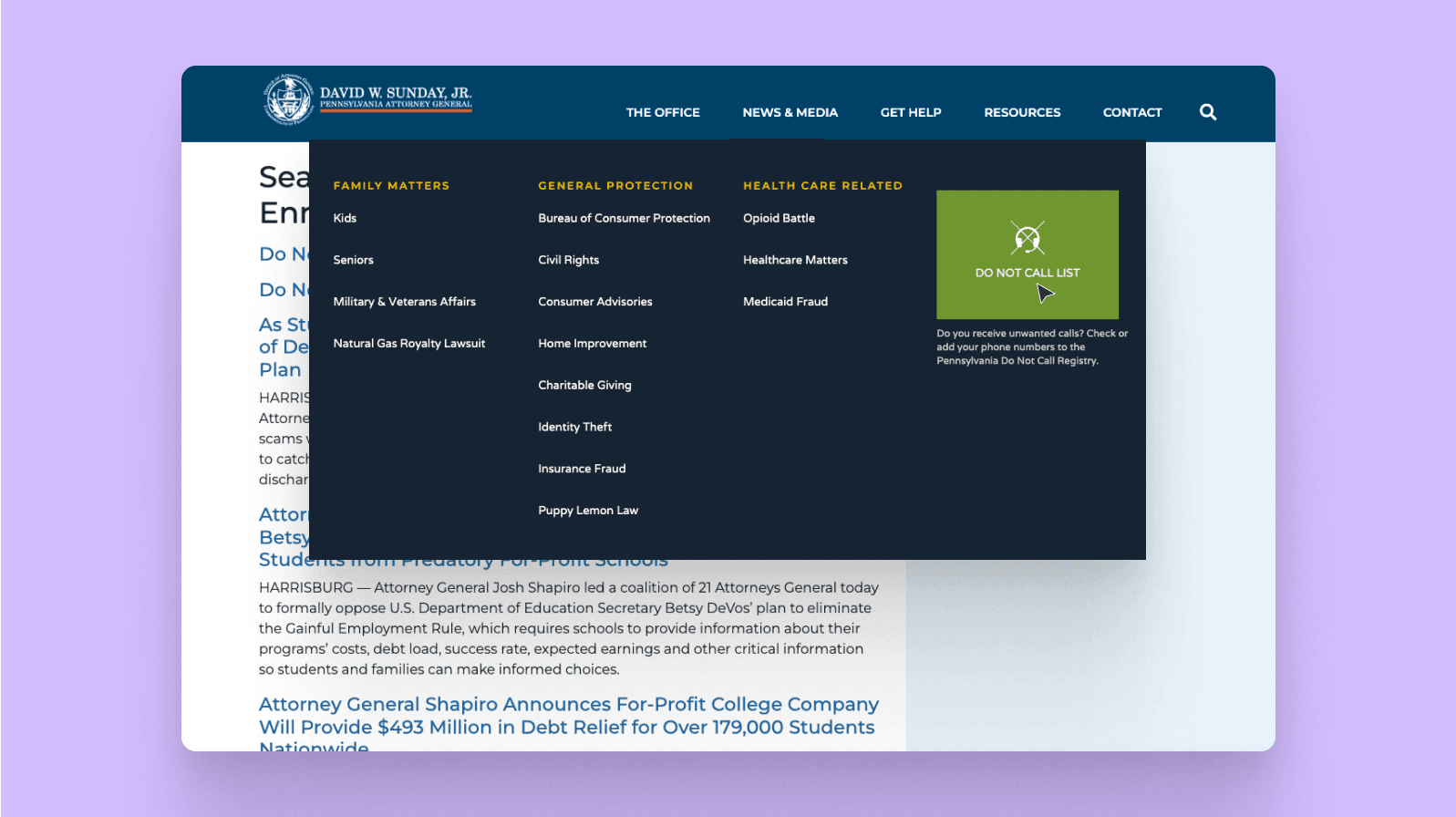
The software that you use should help you comply—or at least not hinder you from complying —with these rules!
6 essential sales call software features to look for
Power dialer
I’ve already talked about power dialers earlier, but I can’t overstate how important it is to have some kind of auto-dialing tool if you’re a high-volume outbound sales team.
Bottom line: If you can use sales automation to take “busywork” (follow-ups, data entry…) off your reps’ plates, do it. Their time is their most valuable asset—help them maximize it.
CRM integration (automations, basically)
The cold calling software you choose should integrate with the tools your team is already using—most importantly, a CRM integration. Again, the benefit of this is that it creates a streamlined workflow for your reps by automatically syncing insights and data.
It’s not just CRMs either—take a look at your team’s workflows and which tools they’re using. For example, if your sellers are also using Outreach to manage email outreach sequences, then your cold calling software should integrate with that as well. Here’s how Dialpad’s integration with Outreach looks:
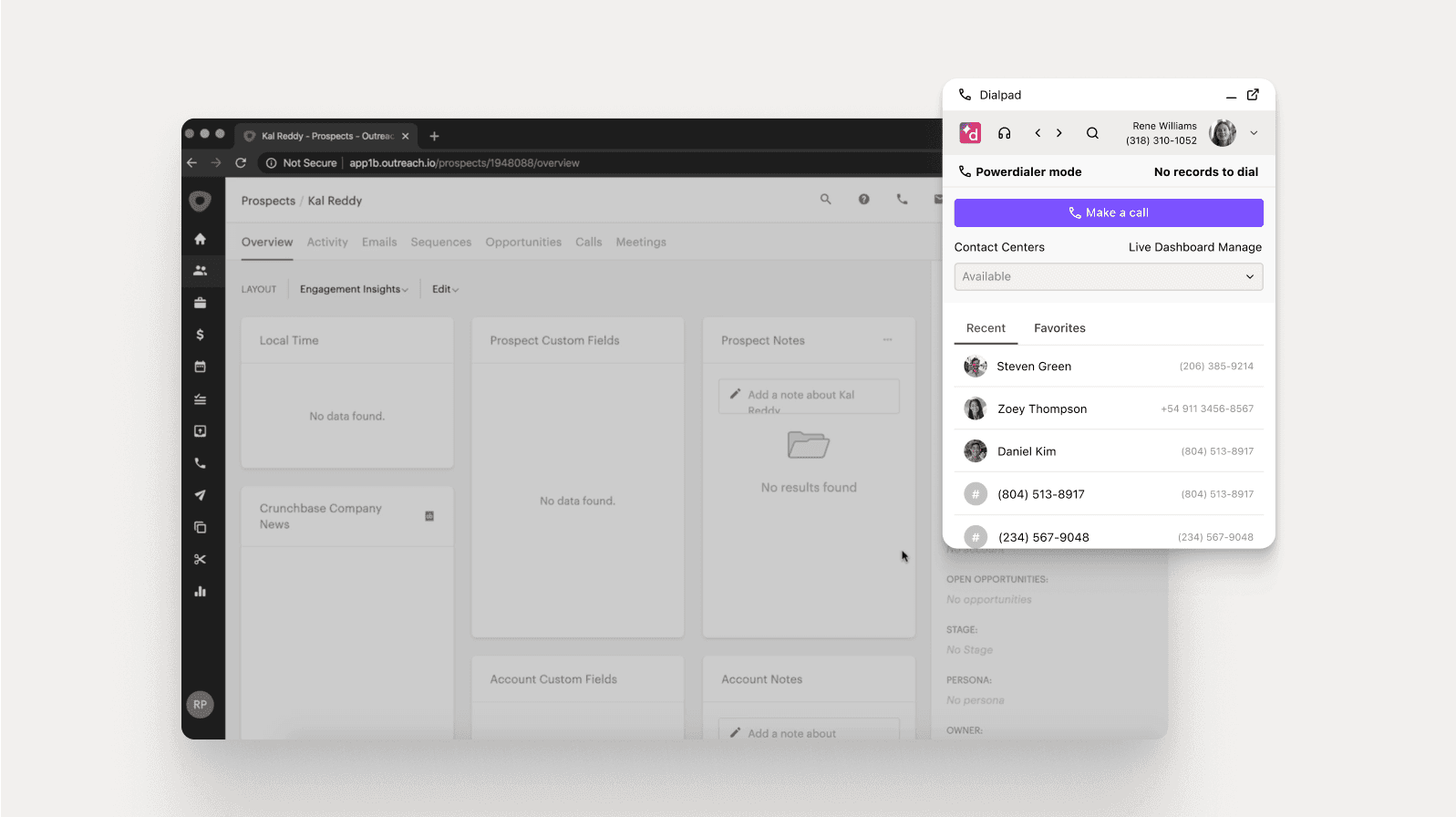
Call recording
If you are a sales leader or work in sales enablement, then you’ll probably want to be able to record calls and play them back. That’s something your cold calling software should be able to help with.
Call recording is super valuable for me—it allows me to review calls, train new team members, and coach reps through difficult call scenarios.
My managers like it because they can listen to recordings of cold calls together with reps and other sales leaders, and get real-time insights during call blitzes.
In addition to recording calls, Dialpad’s call recording feature also records what’s happening on screen, which can help managers of both sales and support teams with training and development.
It’s easy to set up automatic call recording for inbound and outbound calls in Dialpad—just choose your settings and check a box (you can also turn this off and have your team record calls manually):
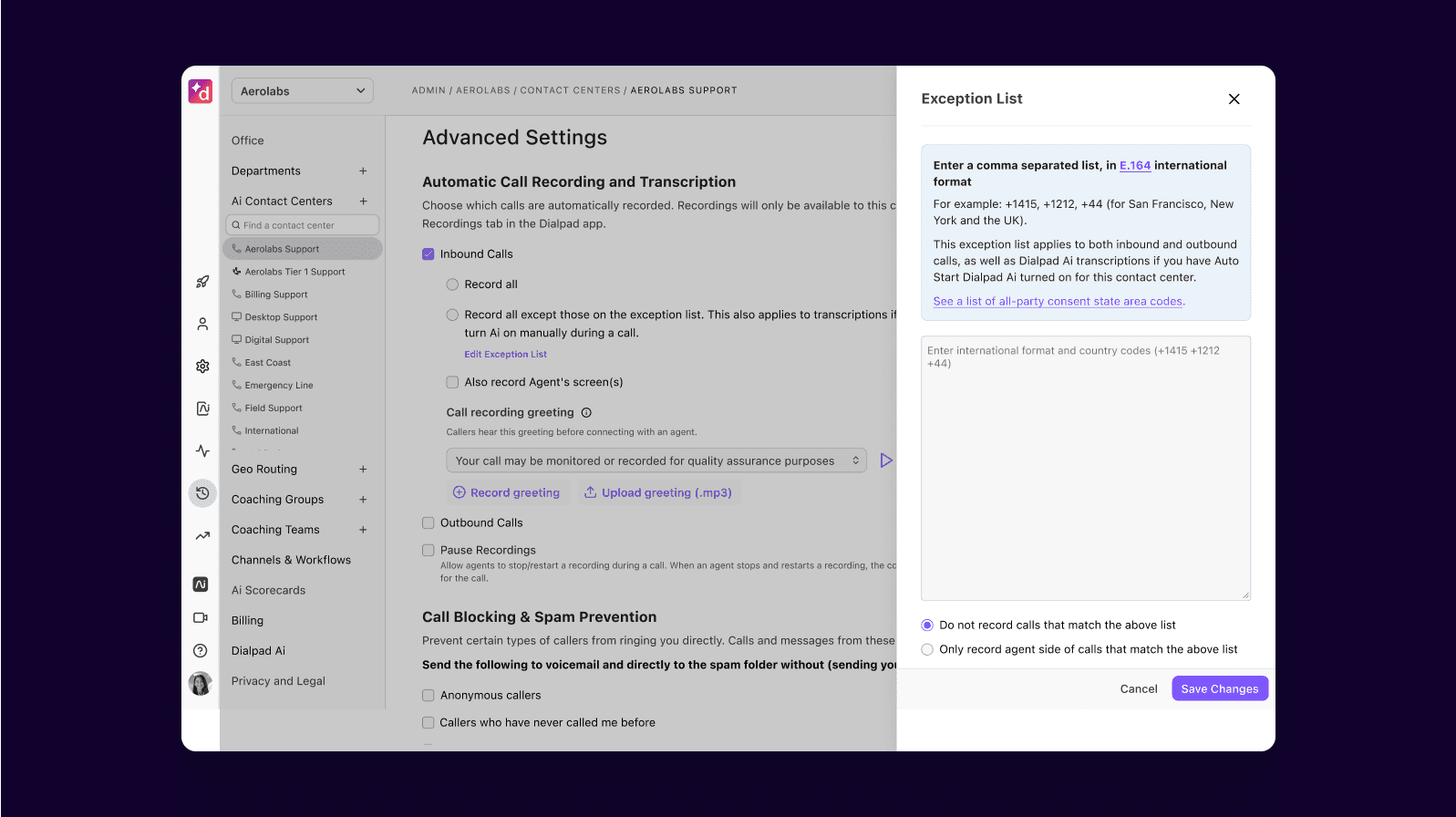
Real-time coaching and objection handling
Wouldn’t it be great if there was a magic tool that could tell reps when they’re saying “Um” too much on calls or speaking too quickly?
While this kind of thing doesn’t exist for everyday, real-life conversations, you can find this feature in some cold calling software. Dialpad's Ai-powered sales outreach platform also has a live sentiment analysis feature that shows sales managers if phone calls are going positively (or negatively) in real-time, so they can listen in and jump on the call if extra support is needed. It’s a great tool to have when training new sales team members:
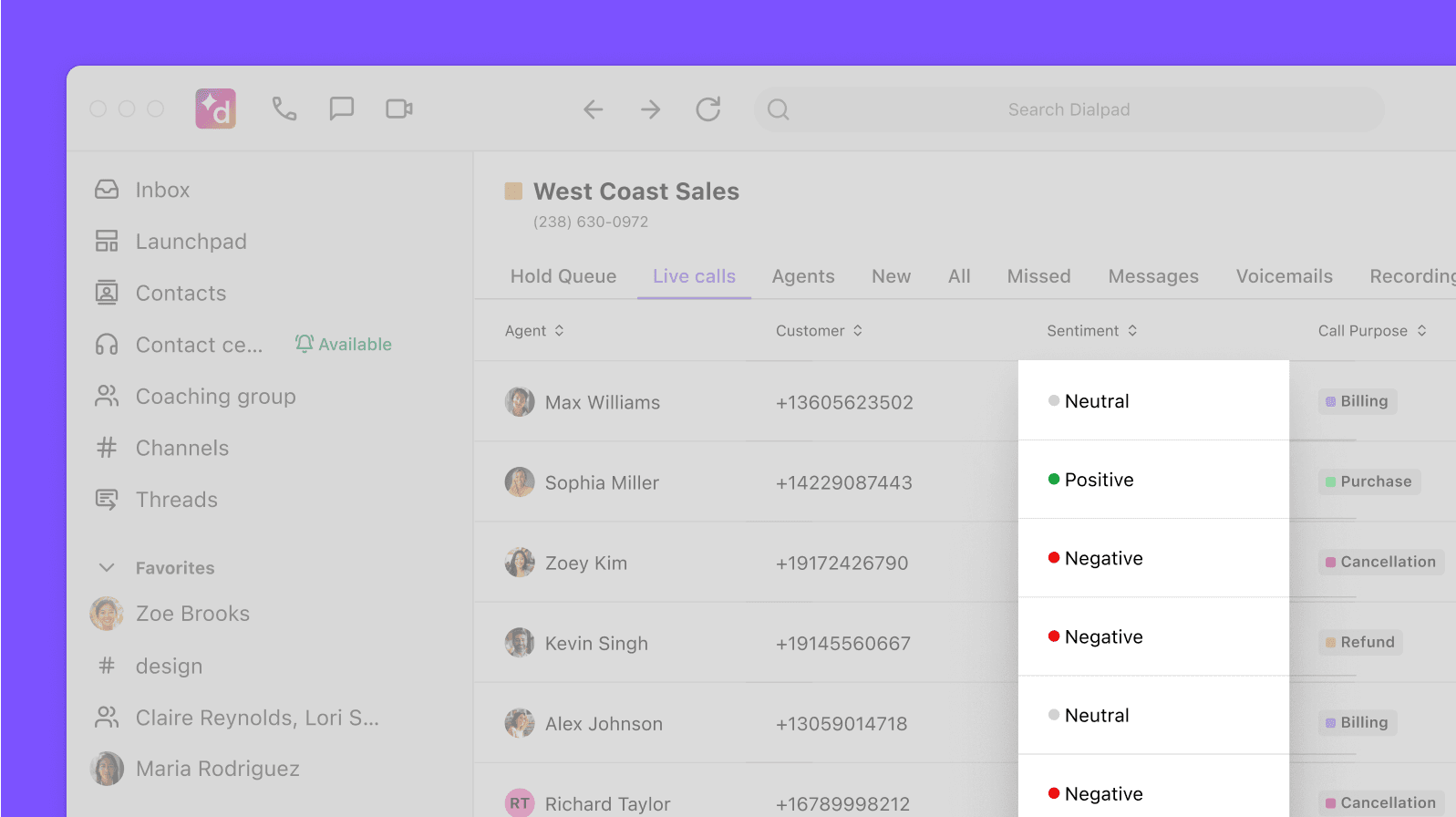
Together, functionality like real-time speech coaching, live sentiment analysis, and Ai Live Coach Cards all help get new sales reps up to speed and working the phones effectively in less time.
If your sales org uses sales methodologies like BANT, SPIN, and SPICED, Dialpad's Ai Playbooks feature helps coaches and supervisors track rep adherence more easily. Dialpad Ai can automatically suggest questions and phrases that they need to say during a call (for example, asking about budget or purchase timelines), understand whether the behavior was met, and check the task off the list (or notify managers if this isn't being done):
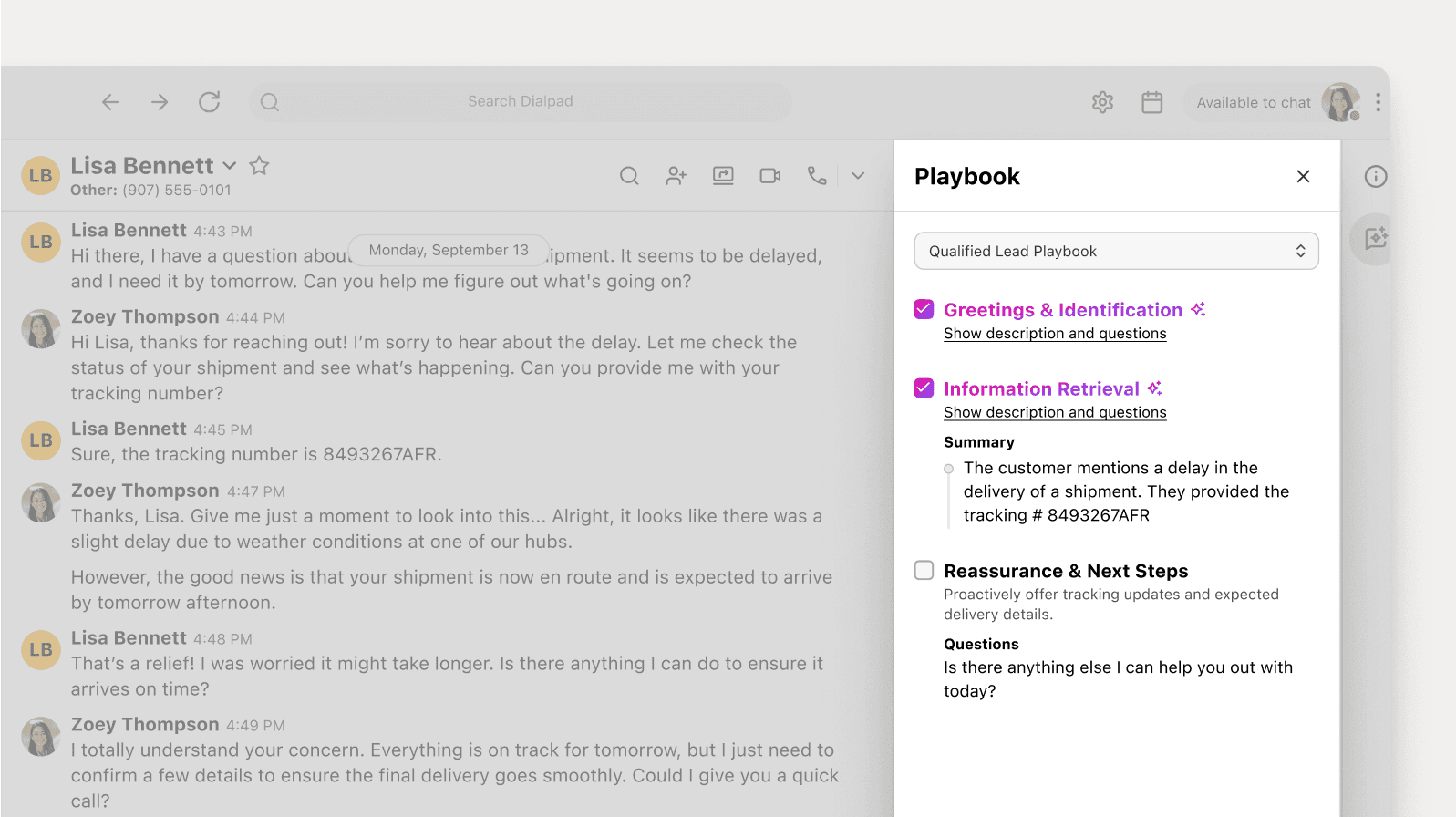
This is helpful for sales leaders, because they don't have to painstakingly review every single call, and can quickly tell which reps need additional coaching or if any parts of the methodology can be improved upon—all thanks to this unique sales Ai feature.
Whether you’re running a small sales team or an outbound call center, real-time coaching tools like these are essential.
Voicemail drop
If your sales team leaves a lot of voicemails on a daily basis, voicemail drop can be a huge time-saving feature to have. It’s an essential for my team to reach more leads in less time by "dropping" a pre-recorded message as soon as they reach a prospect's voicemail.
The best cold calling software: 4 alternatives for your sales team
Now, let's look at four great options when it comes to software for cold calling. Instead of giving you a huge list, here are four different types of cold calling software that cover different needs throughout that process. There are different alternatives for each of these four categories of cold calling software—I've just picked out the most representative examples that are top of mind and/or used by our own teams.
1. Dialpad Sell: Outbound communications
As I mentioned earlier, our own sales team uses Dialpad Sell to do our cold calling activities. Not only can sellers make calls quickly using the Salesforce power dialer integration, there are also many built-in analytics and coaching features that help our managers in their day-to-day work too.
2. Outreach: Outbound emails
If your sales team relies on systematized email outreach campaigns, Outreach is a good tool to have. Many of our customers use Dialpad in conjunction with Outreach (they also integrate with each other!) to plan out more sophisticated sales outreach campaigns that encompass phone calls, emails, direct mail, and other channels.
3. Salesforce: Logging customer and opportunity information
Any sales team that does cold outbounding needs a CRM. Salesforce is a comprehensive CRM platform with many sales automation features that empower sales orgs to manage their leads, pull up information about prospects and opportunities quickly, and just keep their outbound engine running smoothly.
4. Zoominfo: Lead generation and finding contact details
ZoomInfo is a B2B contact database and sales intelligence platform that provides accurate and up-to-date contact information for leads and prospects. If you have a marketing team that brings in leads, great—but if not (or if you want to supplement their lead generation efforts), a tool like Zoominfo is a must-have.
Building an automated cold calling system from your tech stack
Cold calling software typically works in conjunction with a few tools, like your Customer Relationship Management (CRM) software like HubSpot, Salesforce, Zoho, or Pipedrive:
Cold calling software: Typically has VoIP or telephony technology that lets you make the actual phone calls
CRM: An essential lead management tool. It’s basically your directory of prospects and customers, where contact information and details about their interaction history with your business are logged
A “contact info finding tool”: This is more of a nice-to-have. ZoomInfo is probably the most well-known one, though we’ve also tried LeadIQ and Seamless.ai in the past
This combination of tools will help your team both manage leads and make calls, as well as helping sales managers measure sales activity and train sales staff.
Let’s say you’ve collected a list of cold call opportunities and are ready to get your salespeople to start making calls. An automated phone system, sometimes called a dialer, auto-dialer, or power dialer automatically places the call and then moves on to the next one when the previous call finishes.
Dialpad’s Salesforce integration for example, embeds a power dialer right into Salesforce so that sellers don’t have to keep switching between windows or tabs:
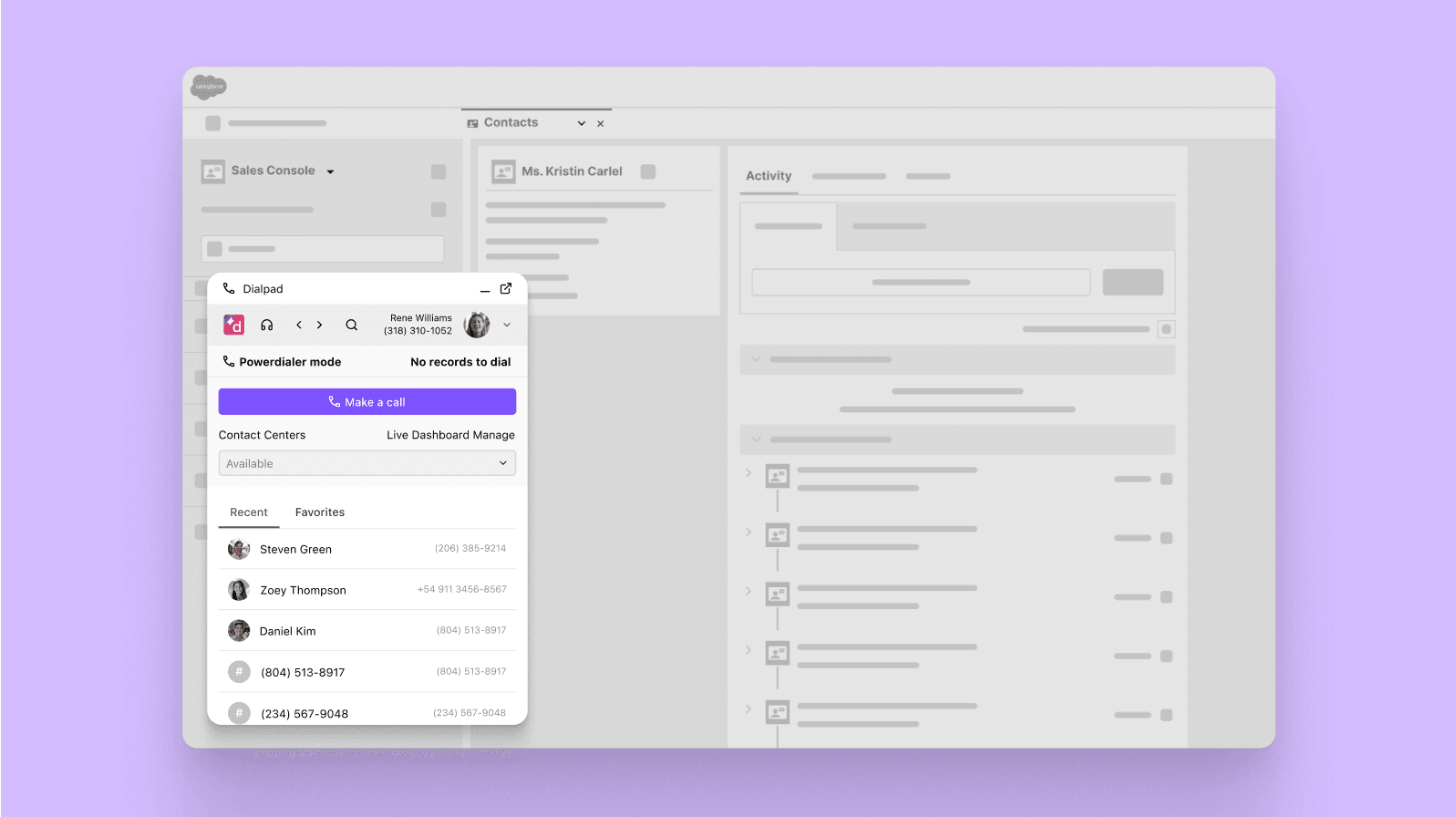
The cool thing about this integration is that not only does it work perfectly on the mobile app, it also automatically logs activities for reps so they don’t have to manually take notes for each call—super important if your team is making a high volume of outbound calls every day. You want to have as many at-bats for your team, as quickly as possible.
And if your team doesn’t use Salesforce, Dialpad also integrates with other sales apps and CRMs like HubSpot:
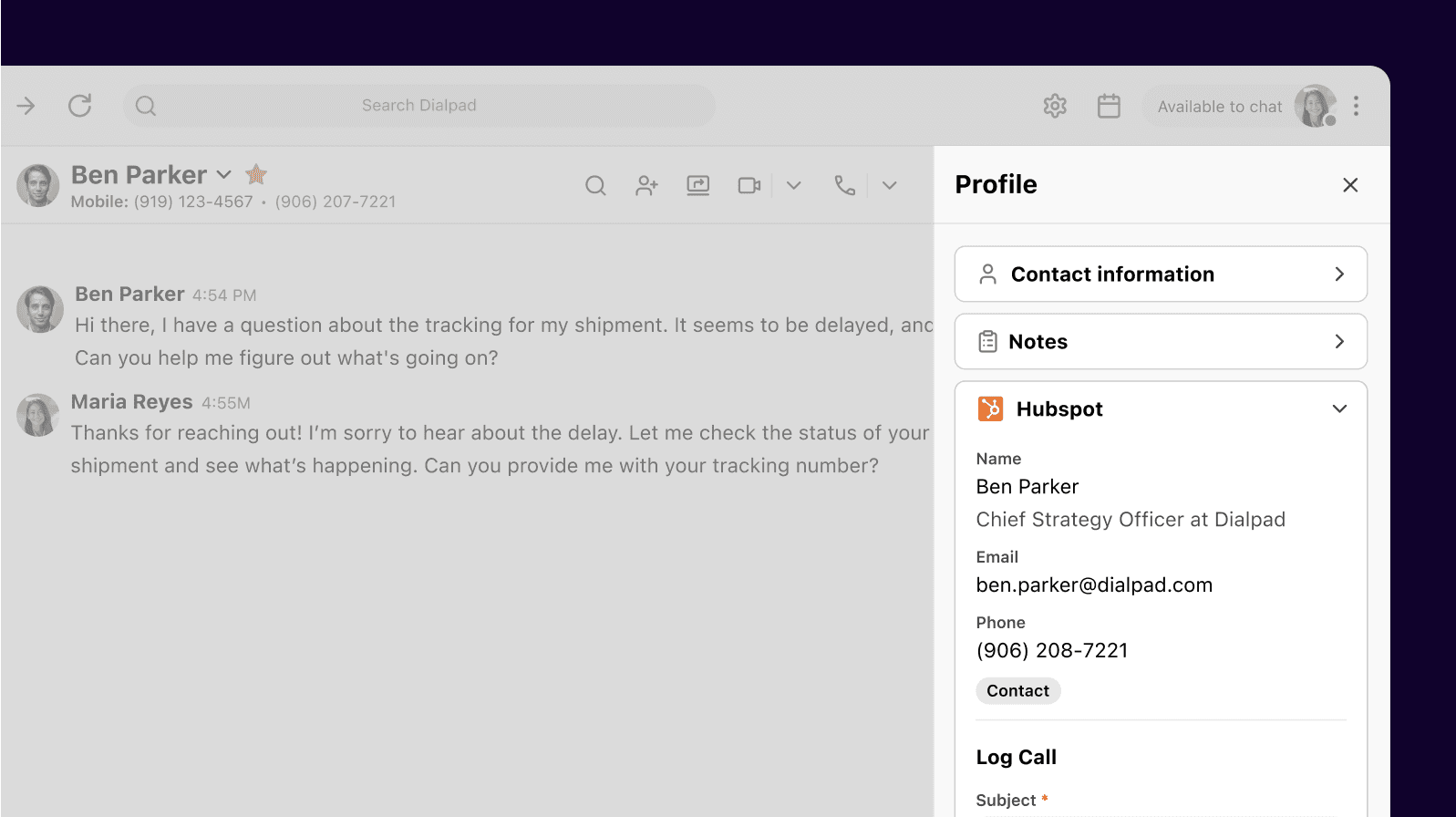
Why use sales call software? The benefits
When you get the magic combo of the right CRM software and the right cold calling software for your business, the benefits are enormous. With outbound sales especially, you can accrue a lot of data like activity notes, phone numbers, emails, and more.
Keeping track of all this could be a nightmare, but cold calling software combined with a powerful CRM can keep everything organized—and your sales activity humming.
Insights into every call
Most of the time, one-on-one cold calls are just black holes of activity—your sales reps make the calls, either someone picks up or doesn’t pick up, they try to set a meeting or make the pitch, and then they move on. It’s just a repetitive set of actions that don’t provide you with any valuable insight.
But if you have good cold calling software, you can uncover learnings in every call—even the “unsuccessful” ones.
For example, with Dialpad Sell, we have the ability to record calls. This is essential, especially for training new team members (and even for helping out more experienced team members with challenging calls). Recorded sales calls become a treasure trove of data that you can search in Dialpad's platform.
I can also create coaching playlists, where I can curate a collection of sales call moments and share with my team for training. If one of my reps handled an objection particularly well, I can add the call to, say, a “Best Objection Handling Learnings” playlist so that sellers can listen to these case studies and learn on their own time:
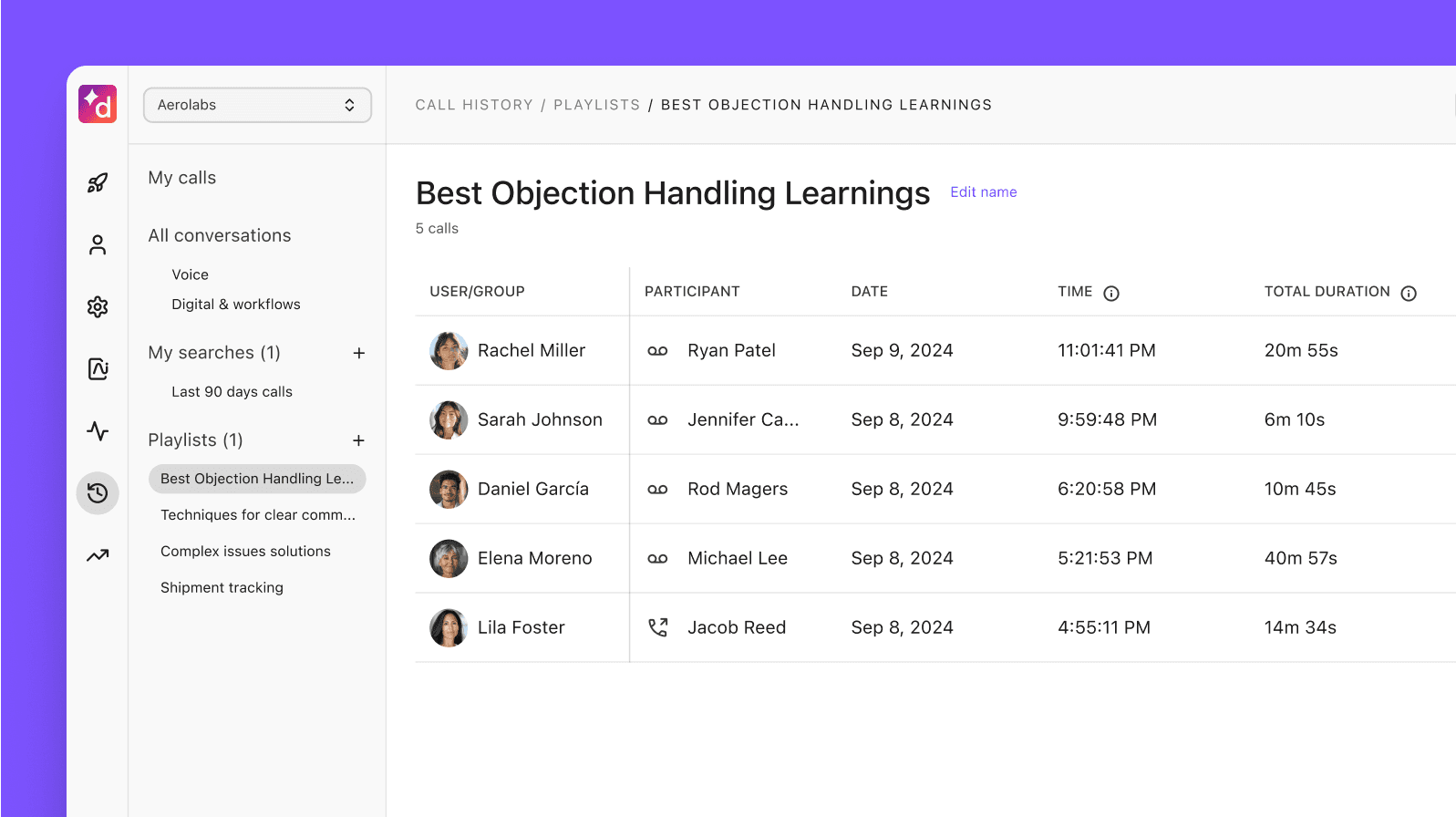
💡 Dialpad tip:
Create playlists based on different sales call functions or difficult moments, and share them with your sellers with a link. (More on sales call planning here.)
Dialpad can also transcribe each sales call—in real time!—thanks to its artificial intelligence:
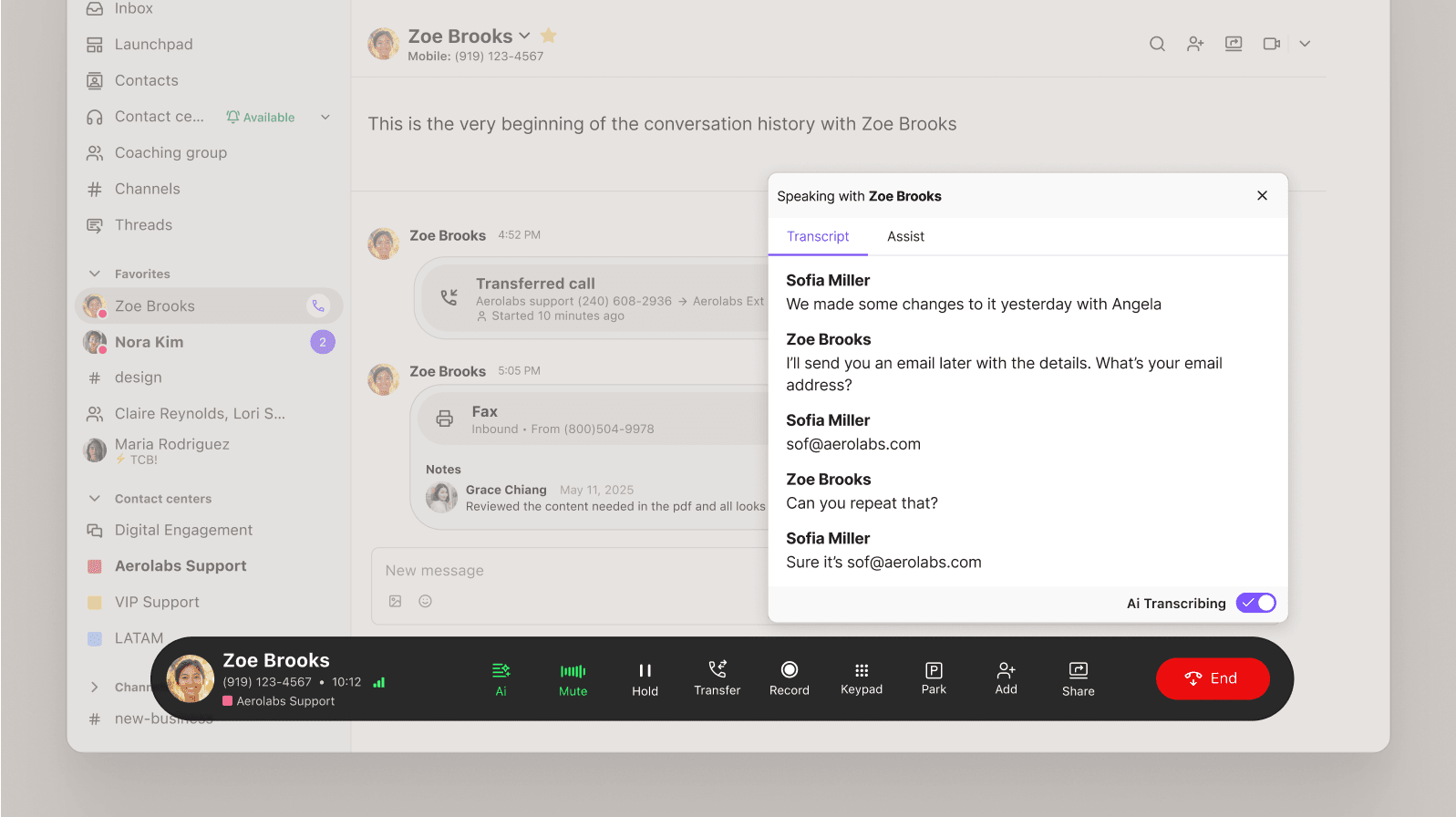
The neat thing about this is that managers and coaches can see running transcripts for every call in progress, for every agent or rep on their team. It means you can spend more time listening to recordings of actual live calls—rather than listening to your reps leave a voicemail or hear the phone ring (and also lets me provide more real-time coaching through messaging on Dialpad as a result).
💡 Dialpad tip:
This is most helpful when I’m doing a scheduled call blitz with my whole team.
The transcript also gets emailed to you automatically for review as part of a call summary after the call has ended—I don’t know about you, but I can scan and read transcripts in much less time than it takes to listen to the recordings. And I can click on a certain point in the transcript to instantly play the recording from that moment, which helps me hone in on the key moments more quickly:
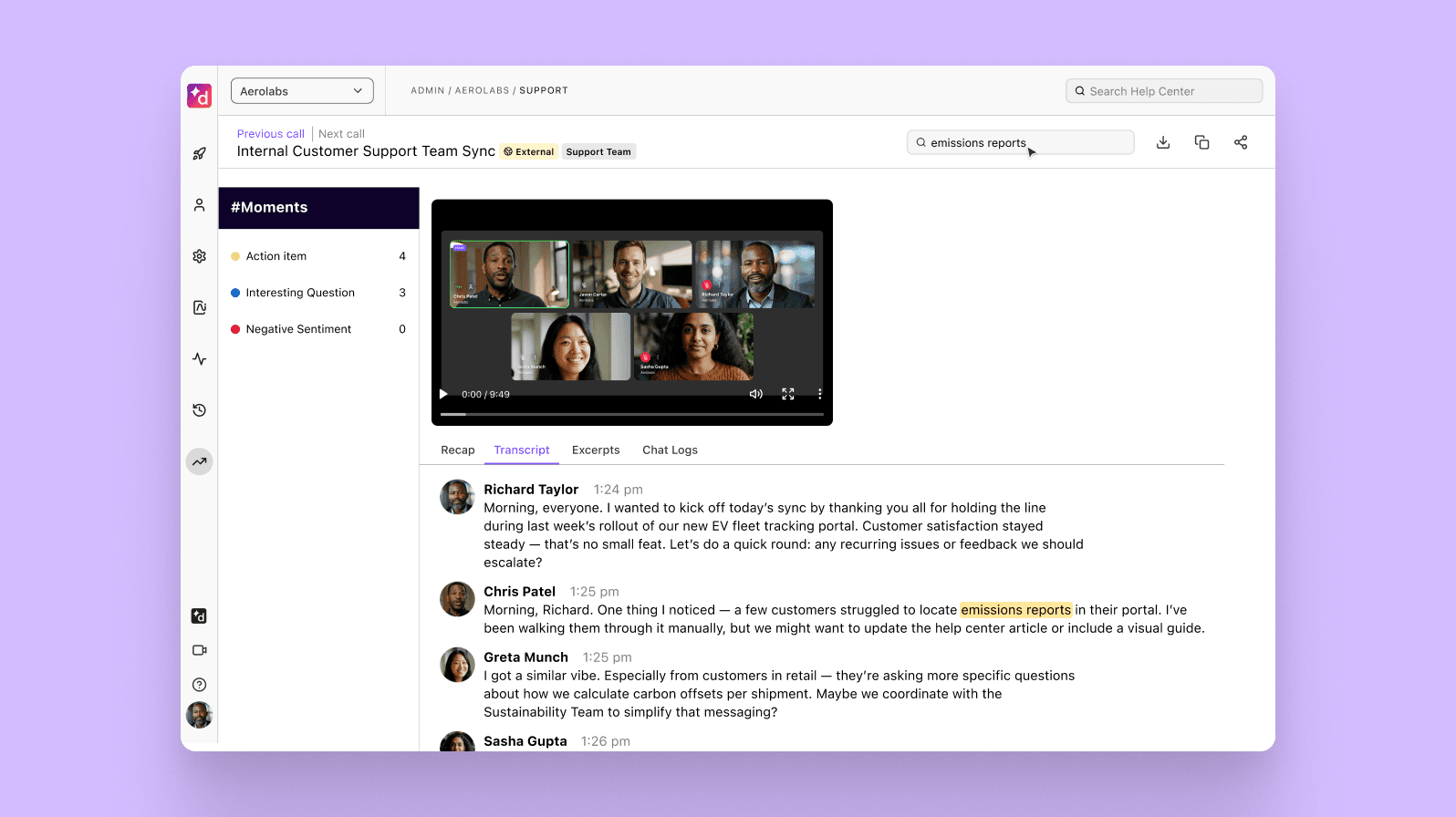
For busy sales leaders, call transcripts are pretty much a must.
With this information gleaned from our sales calls, I can do another crucial thing as a sales leader: coach and train my sales team more efficiently. How?
Dialpad Ai not only transcribes calls, it also picks up on keywords that are spoken on calls—which means I can track specific keywords (like competitor names and features that prospects frequently ask about). All I have to do is create a "Custom Moment" with trigger words or phrases:
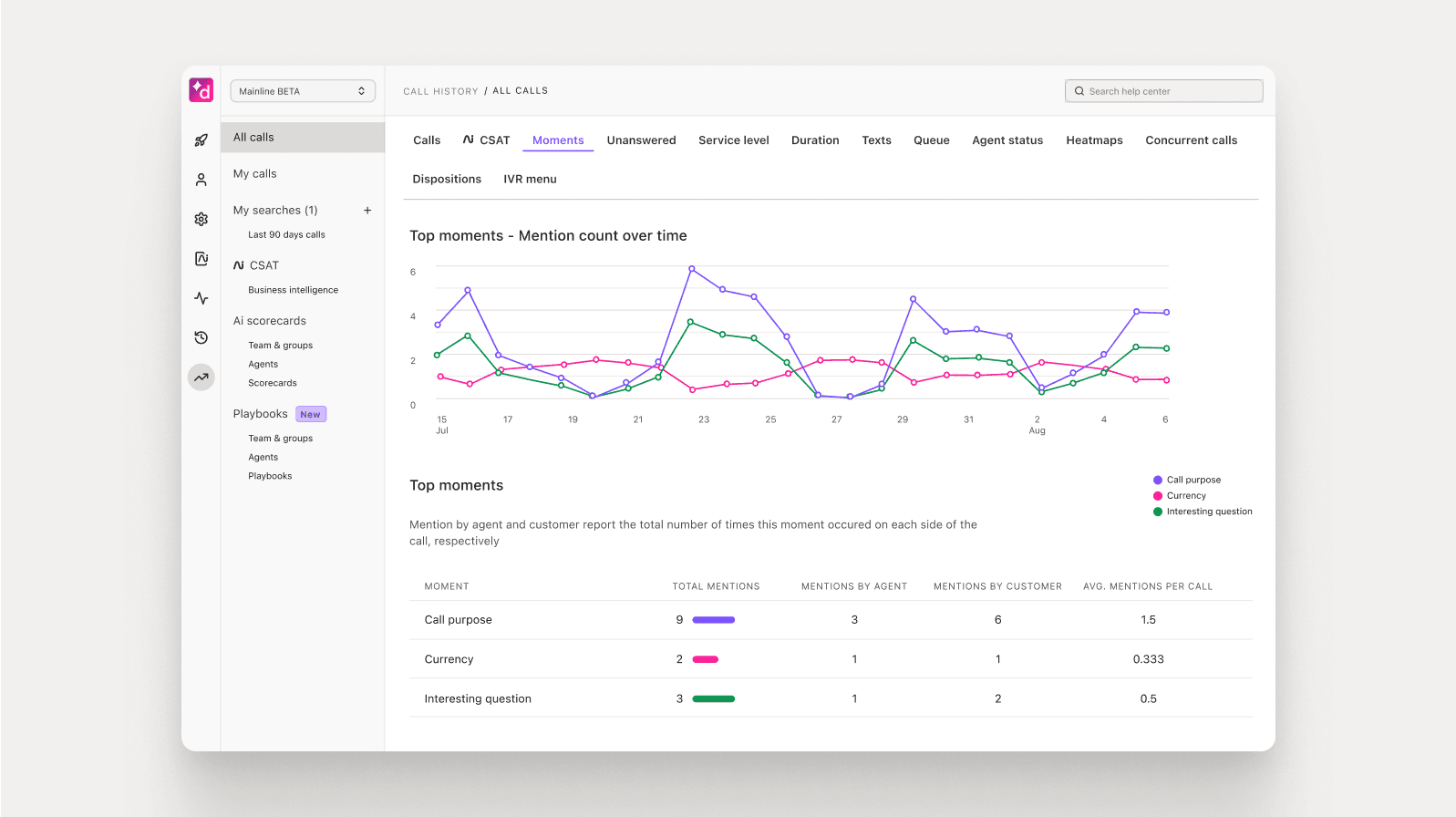
This will then track how frequently these Custom Moments occur on calls—if I notice certain topics coming up a lot, I can dig into those transcripts and recordings to get more context.
To go one step further, I can also create Ai Live Coach Cards that automatically pop up when the prospect and/or the rep uses specific triggers or words (this is a popular feature with our support team too):
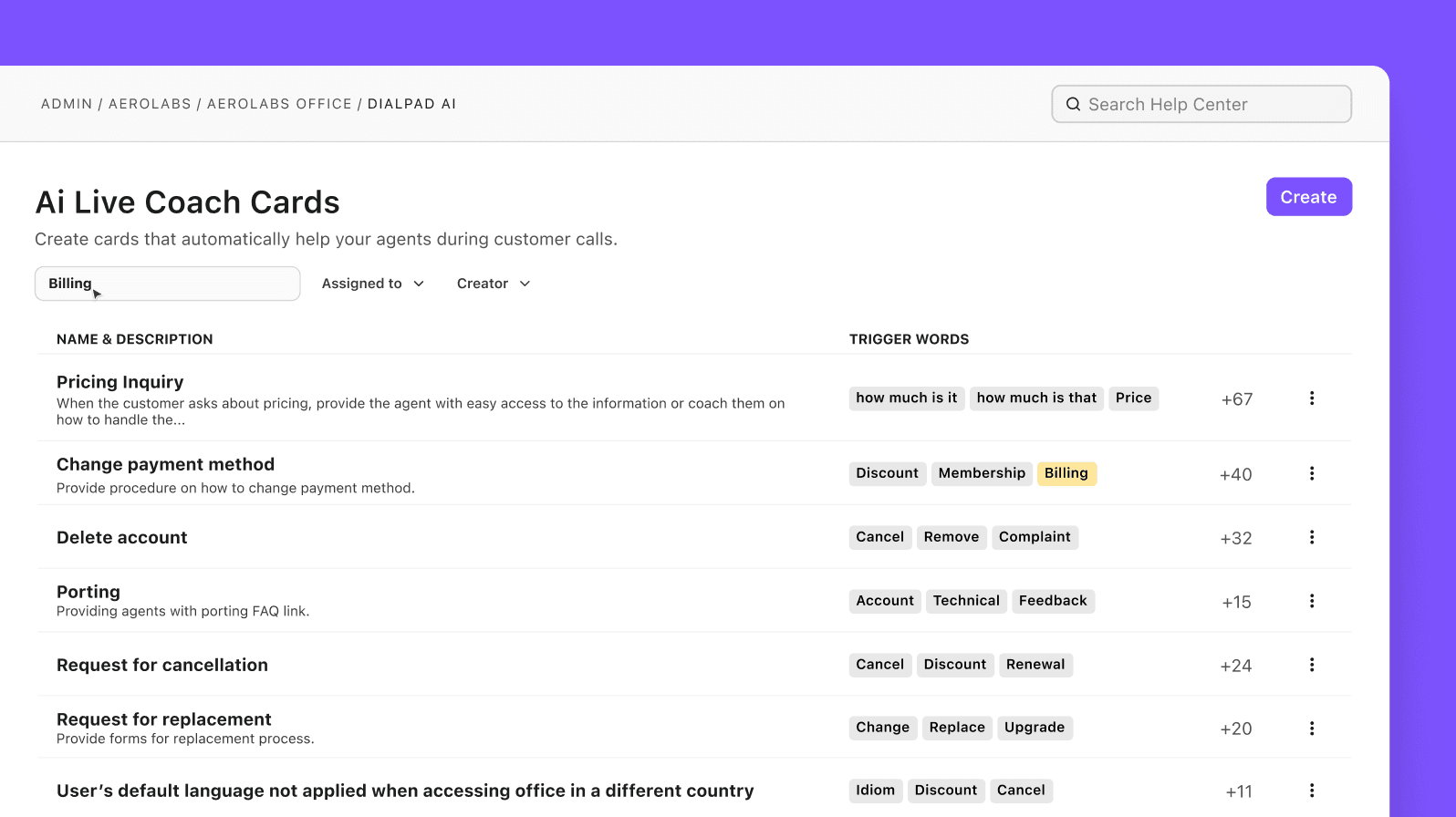
Ai Live Coach Cards are great, especially for newer reps who aren’t super familiar with things like pricing and the competitive landscape yet—they’re essentially cheat sheets with notes on how to speak to any topic you want.
💡 Dialpad tip:
Check out how Jumpcrew's sales reps used Dialpad to cut their sales cycle time in half.
More at-bats (sales call opportunities) for your team
Cold calling isn’t easy. It’s a numbers game—the more calls you make and the more at-bats you get, the better chance you have of setting meetings and generating leads.
Not every business relies on cold calling, but for the ones that do, this is the number one reason to use cold calling software: to help your sales team make more calls, faster.
A CTI (computer telephony integration) feature basically turns your computer into a phone—which means you can do things like click to dial instead of manually entering phone numbers..
Dialpad also has another great feature that accelerates seller activity: voicemail drop. For many outbound sales teams, getting a pickup is not a guarantee. In fact, many cold calls go to voicemail. How much time is your sales team spending on reciting a voicemail script?
With Dialpad, if someone doesn’t pick up, my reps can “drop” a pre-recorded voicemail message and move on to the next call—which can save hours if you’re a high-volume outbound team:
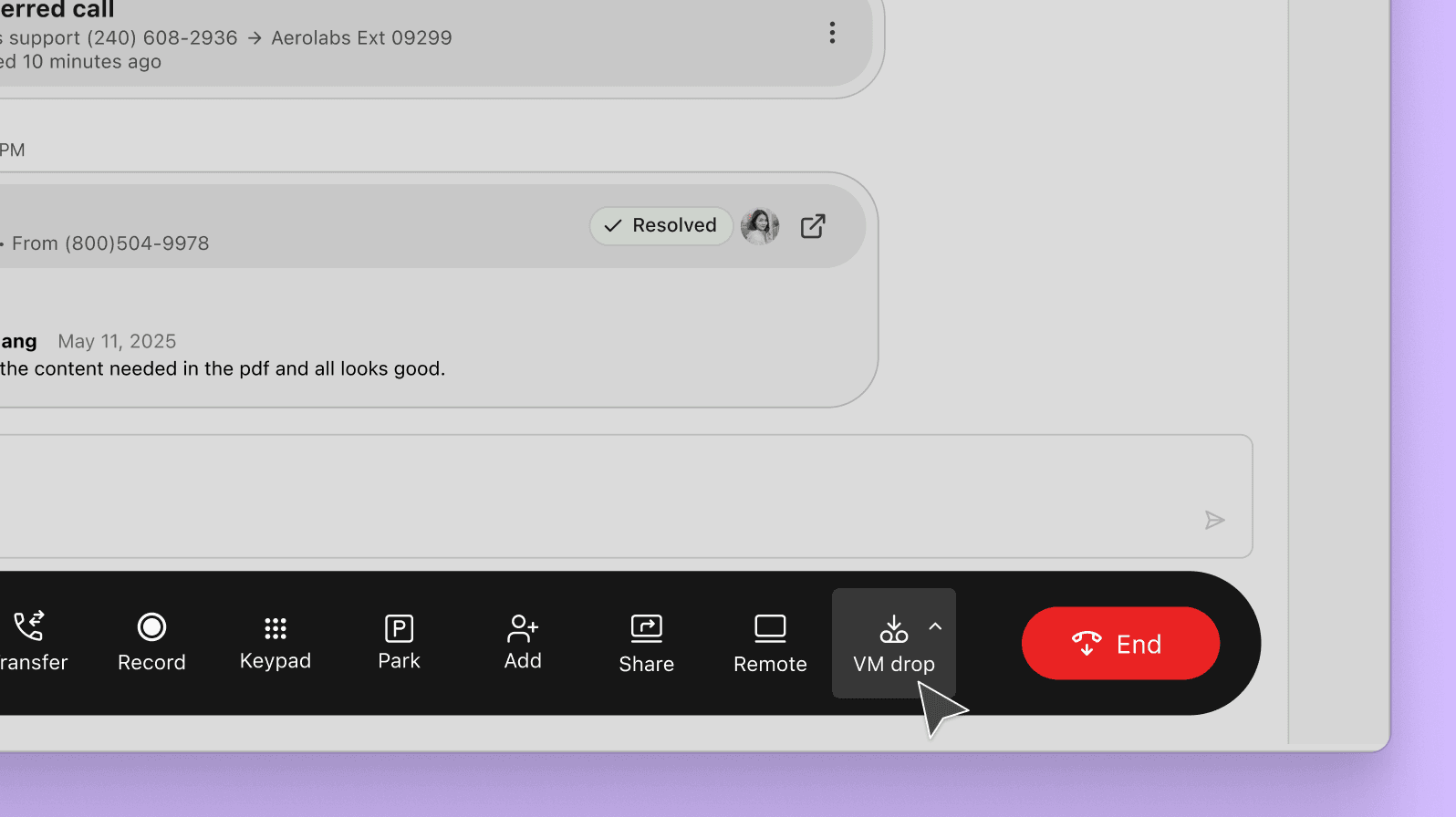
💡 Dialpad tip:
Voicemail drop is TCPA-compliant because it’s not robo-calling and it requires the rep to physically push the voicemail drop button after the call is connected.
What can your reps do with the extra time that they don’t have to spend on reciting voicemail messages?
Consolidated data
Many sales orgs have way too many tools. It’s no one’s fault—it’s often just a natural progression at the vast majority of companies. But it makes life harder for sellers, not only because they have to switch between tools constantly just to do different tasks, but also because information and important data end up being scattered in different places.
Cold calling software that integrates with your CRM can consolidate data to make your life easier, reducing the amount of copying and pasting your team has to do because it just syncs data between the tools automatically.
For example, when our sales team uses Dialpad Sell to make cold calls, every interaction and call is automatically logged, along with transcripts and notes in Salesforce, so that reps are prepared with everything they need to maximize their chances of booking a meeting at all times.
Empower your sales team with cold calling software
From real-time metrics to coaching at scale, the benefits of using cold calling software are huge.
Many of these features also come with contact center software designed for sales teams—just make sure that whichever one you end up going with will actually enhance the quality and number of your outbound calls.
Some might argue that “cold calling is dead,” but with the right tools, you can make cold calling your strongest sales strategy, whether you run an enterprise outfit or a startup business.
Looking for cold calling software that'll help your sellers book more meetings and increase pipeline?
Book a product tour of Dialpad's Ai-powered sales outreach platform and see how it can work for your sales org!
